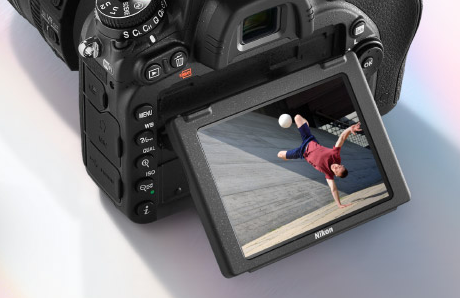 Last week I wrote a piece about kicking your photography up a notch (‘How To Shoot Photos Like A Pro’), this week I thought it would be a great follow-on to look at one of the main reasons people buy cameras – to make portraits. Although we may not always think of our photos as ‘portraits’, I believe that anytime we take a photo of someone who is aware that their photo is being taken, that is a portrait. Of course that’s not to say that all portraits are equal, and today I’m going to give you some tips and ideas to help you make portraits that you’ll be proud to hang on your walls.
Last week I wrote a piece about kicking your photography up a notch (‘How To Shoot Photos Like A Pro’), this week I thought it would be a great follow-on to look at one of the main reasons people buy cameras – to make portraits. Although we may not always think of our photos as ‘portraits’, I believe that anytime we take a photo of someone who is aware that their photo is being taken, that is a portrait. Of course that’s not to say that all portraits are equal, and today I’m going to give you some tips and ideas to help you make portraits that you’ll be proud to hang on your walls.
Focal length
Last week I spoke about the minimum equipment requirements to make professional grade images, so if you haven’t read that article, I definitely think it’s worth clicking the link above and getting up to speed. In order to make effective portraits, you’ll need to be aware of your focal length. Shorter focal lengths, say for example 16-35mm, are subject to something know as barrel distortion, which at extremely short focal lengths gives you the so-called ‘fish-eye’ effect. Barrel distortion is something that in general we want to avoid when making portraits because it can be very unflattering to the human body, causing parts of the body to look much bigger in relation to others than they actually are.
Lens choice
The portrait lens of choice for many professionals is the 85mm prime lens. But most professionals use cameras with full-frame sensors. If you’re using a camera with a smaller sensor like an APS-C (as carried by the Canon SL-1) or Micro Four-Thirds (as carried by the Olympus OM-D EM-10), then you have to keep the crop factor in mind (which I discussed in this piece: ‘Sensor Size And Crop Factor Demystified’). Basically a 50mm lens on camera with a APS-C sensor will act like an 80mm lens on a full-frame camera, while a 45mm lens on a Micro Four-Thirds camera will act like a 90mm lens, both of which are perfectly acceptable for making portraits.
Lighting
After the choice of lens, the next most important consideration of the professional photographer is the light. Lighting is kind of an obsession for professional photographers because it’s something that can make or break you. Good lighting (or ‘effective’ lighting, to put it another way) not only allows us to see detail and form in our subjects, it also adds emotion and feeling to our images. Personally I’m a huge fan of natural light. Not only is it free, it requires no equipment or setup.
Window light
One of the most popular techniques used by portrait photographers is simply to position their subjects near a window. The window acts as a light source, and provided you have a fairly unobstructed view (i.e. no buildings or trees in very close proximity), then you should get plenty of soft and directional light. It is important that the sun isn’t shining through the window because sunlight can be really harsh and difficult to work with.
Soft light
You’ll often hear photographers talk about ‘soft’ light, and it’s an important concept for the portrait photographer to grasp, because soft lighting is generally the most flattering, and so it’s a go-to style for portraits. Generally all light sources (the sun, studio strobes, flash units, bare bulbs) are harsh when unmodified. We modify them by putting opaque materials in front of them which diffuse the light to make it easier on the eye. Clouds, for example, act as diffusers for the sun. So photographing outside on a cloudy day is preferable to photographing under a high noon sun. The downside is that on a cloudy day the light lacks directionality, which makes it kind of flat and emotionless.
The Golden Hour
One of the absolute best times to make a portrait is around dusk on a sunny day. Photographers often refer to this as the ‘golden hour’. When the sun is low, it has to pass through a lot more of the atmosphere than when it’s overhead and this actually diffuses it to the point where it’s useful for portraits. You get long dramatic shadows and a beautiful golden hued light that looks spectacular.
Shoot Into The Sun
I often like to position my subjects with their backs to the sun and shoot straight towards it. You have to overexpose your image according to the light meter, so that you get enough detail in your subject’s face, and the resulting image will have a dreamy, washed-out feeling that you’ll see over and over again in professional photographers portfolios. When you shoot into the sun you’ll sometimes get lens flares too, which can look really cool.
Connect With Your Subject
Aside from all the technical aspects of making great portraits there’s another side to it that is very, very important; connecting with your subject. I sometimes spend more time chatting with subjects than photographing them, because I want them to look totally at ease, and in order for this to be the case they actually have to be totally at ease. I never talk about what’s going on inside my head in terms of the photographic process, because that’s not something that’s likely to draw them out. In fact it may only serve to heighten their nerves. Similarly, when you look at the back of your camera to see if things are looking good, never say anything negative. If the setup isn’t working just say ‘That’s great. Now let’s try something else’. Creating a positive atmosphere will make your subjects feel good and lead to good facial expressions.
Watch Your Background
That’s a lot to think about and work on, but there is just one more thing I want to mention today; backgrounds. Early in my photography studies, when I already knew that I wanted to photograph people, I started to look at the work of headshot photographers. I came across the work of Aaron Kneile, and I was just blown away. And I as tried to pinpoint those elements that made his work so strong, I realised that he was very conscious in choosing his backgrounds. In most cases they are very simple, and this keeps the focus on the subject. It can be a tough skill to master, watching your exposure, your focus, your composition and the background, but it can such a huge difference to your work.
Like anything the key to improving your portraits is practice, practice, practice!



